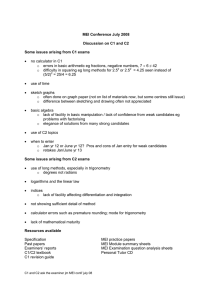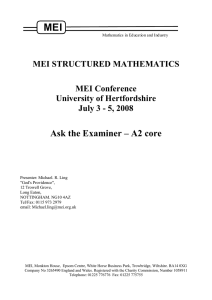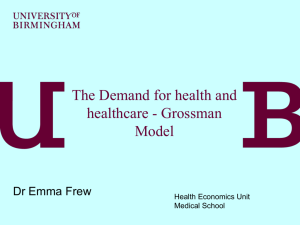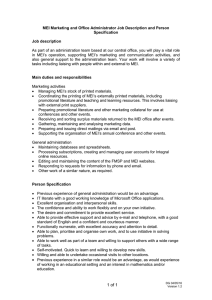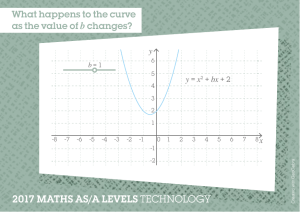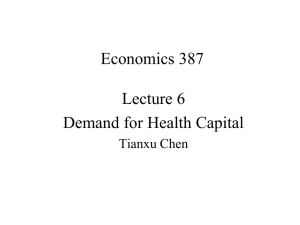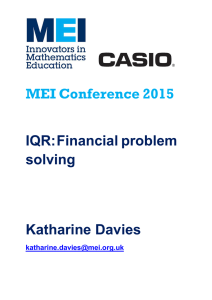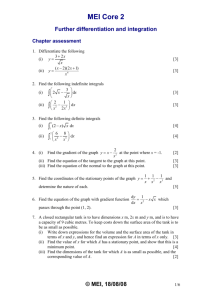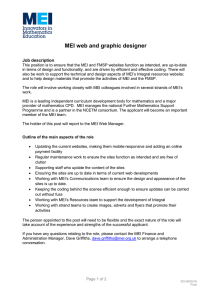Chapter 7 Demand for Health Capital
advertisement
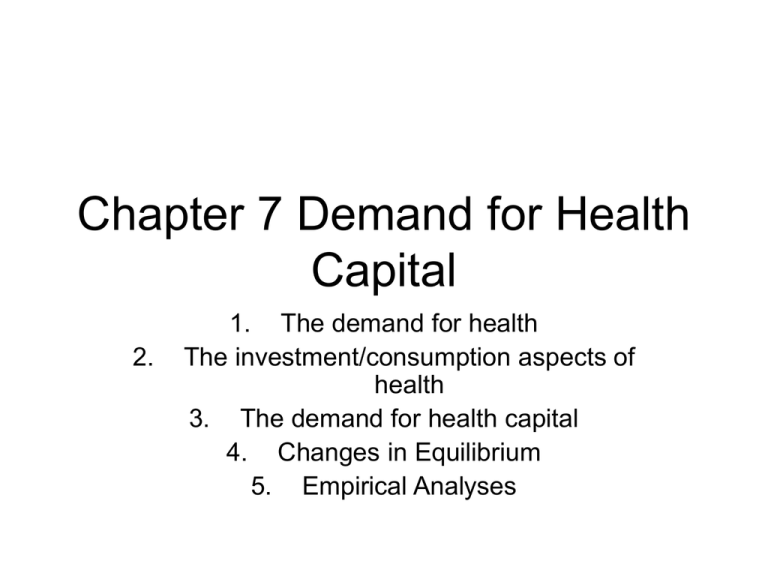
Chapter 7 Demand for Health Capital 2. 1. The demand for health The investment/consumption aspects of health 3. The demand for health capital 4. Changes in Equilibrium 5. Empirical Analyses The demand for health • Grossman (1972) 1. consumers want health, not medical care 2. The consumer as health producer 3. health capital 4. consumption good and investment good • Figure 7-1 • Time Spend Producing Health I=I(M, Th) (7.1) B=B(X, TB) (7.2) Total time=T=Th(improving health)+Tb(homr goods)+Tl(loss to illness)+Tw(working) (7.3) Labor-Leisure Trade-offs • The maximum amount of time for work or leisure T-Th-Tl=Tw+Tb (7.4) • Figure 7.2 Labor-Leisure trade off the slope of VS=wage rate Indifferent Utility=U(Income, leisure time) • Figure 7.3 In creased amount to health time due to investment Th increases and Tl decreases 1. shifts time-leisure line 2. higher productivity=> higher wages=> steeper time-leisure line The investment/consumption aspects of health • Dual nature of health as investment and consumption • Production of health days (Figure 7-4) the bowed shape=> the law of diminishing marginal returns Hmin=dealth; Hmax=365 • Production of health and home good (Figure 7-5) 1.from A to C: health improvement increases home good (health as investment good) 2. utility from Health and home good (health as consumption good) • The cost of capital: opportunity cost interest cost+ depreciation cost • Decision rule: if Rate of Return cover the cost of capital The demand for Health capital • Marginal Efficiency of Investment (MEI): 1.Figure 7-6 describes the pattern of rates of return declining as the amount of investment increases (the production function for health days exhibits diminishing returns) 2. the optimal demand for health Changes in Equilibrium: Age, Wage, Education, and Uncertainty • Age: 1.the depreciation rates increases with age 2. optimal health stock decreases with age 3. higher depreciation rates increases the cost of holding health capital stock 4. People will increase their gross investment in health as they age 5. If people increases their valuation of health days as they age, this somewhat offsets the predicated health stock decline • Wage rate: 1.higher wages imply a higher MEI curve=> a higher optimal level of health stock 2. Hmin=retirement (investment version) • Education 1. education=>efficiency in producing health=> a higher MEI 2. the correlation of health status and education from the supply side 3. From the demand side, educated people have a good taste for health relative to other goods • Uncertainty: 1. Grossman starts with assumption of prefect certainty as to future outcome 2. Chang (1996) treats the investment in health as a potential risky venture (a) The first effect-the improvement of future earnings-would shift his MEI outward (b) The second effect means unless changes occurs in productivity, increased health investment would move down MEI Empirical Analyses Using Grossman’s model • Sickles and Yazbeck (1998):health care and leisure consumption tend to improve health. • Gerdtham and Johannesson (1999): demand for health increases with income and education and decreases with age, urbanization, being overweight, and being single. • Crossed fields of economics
